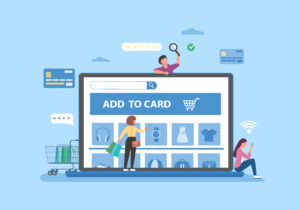Shopify provides powerful tools for managing product listings, processing payments, and optimizing storefronts, many store owners overlook the importance of blogging as a strategic marketing tool. In this comprehensive guide, we’ll dive into the world of blogging for Shopify stores, exploring why it’s essential, how to get started, and strategies for crafting compelling and effective blog content.
Understanding the Importance of Blogging for Shopify Stores
Blogging plays a crucial role in enhancing the online presence of Shopify stores in several ways. Firstly, it significantly improves search engine optimization (SEO) by increasing website visibility, driving organic traffic, and improving search engine rankings. By regularly publishing high-quality and relevant content, Shopify store owners can attract more visitors to their websites and improve their chances of being discovered by potential customers.
Furthermore, blogging allows Shopify store owners to establish authority and credibility within their niche. By sharing valuable insights, industry trends, and expert opinions, store owners can position themselves as thought leaders and trusted sources of information. This, in turn, builds trust and credibility with their audience, leading to increased brand loyalty and customer retention.
It serves as a powerful tool for driving traffic to Shopify stores. By creating engaging and shareable content, you can attract new visitors to the websites and expand the audience reach. By promoting the blog content through social media, email marketing, and other channels, store owners can drive traffic and increase brand awareness.
Moreover, it acts as a tool to facilitate engagement with customers by providing them with valuable and relevant content that resonates with their interests and needs. By encouraging comments, shares, and discussions, store owners can foster a sense of community around their brand and strengthen relationships with their customers.
Blogging complements the overall marketing strategies of Shopify stores by educating customers, influencing purchasing decisions, and supporting marketing campaigns. Store owners provide valuable resources like product guides, tutorials, and industry insights to educate their audience, thereby enhancing brand trust and loyalty.
Getting Started with Blogging on Shopify
Setting up a blog on Shopify is relatively straightforward. Store owners can easily add a blog to your Shopify store by accessing the “Online Store” section of the Shopify dashboard and selecting “Blog Posts.” From there, you can customize the blog settings, including the layout, design, and formatting options.
Once the blog is set up, Shopify store owners can start creating and publishing content. When choosing topics for the blog posts, you should consider the target audience’s interests, needs, and pain points. By addressing topics that resonate with the audience, you can create content that is relevant and engaging, leading to increased reader interest and interaction.
Planning is essential when it comes to blogging for Shopify stores. You should create an editorial calendar to schedule and organize their blog content effectively. By planning ahead, you can ensure consistency in the publishing schedule and maintain a steady flow of fresh content for the audience. You can read here about organizing blogs.

Crafting Compelling Blog Content for Shopify Stores
Creating high-quality and engaging blog content is essential for attracting and retaining readers. When crafting blog posts, you should focus on providing value to the audience by offering insightful and actionable content. Whether it’s informative articles, how-to guides, or product reviews, you should aim to deliver content that addresses the audience’s needs and interests.
In addition to written content, you should also incorporate multimedia elements such as images, videos, and infographics to enhance the visual appeal and engagement of your blog posts. Visual content can help break up text, increase reader engagement, and make blog posts more shareable on social media platforms.
When structuring blog posts, you should use headers, subheadings, bullet points, and clear formatting to improve readability and user experience. By breaking up content into digestible chunks and using formatting techniques to highlight key points, you can make the blog posts easier to read and understand.
Encouraging reader interaction is another important aspect of blogging for Shopify stores. You should actively encourage comments, shares, and discussions by asking questions, soliciting feedback, and inviting readers to participate in the conversation. By fostering a sense of community around the blog, you can increase reader engagement and build stronger relationships with the audience .Read more about how to structure your blogs here.
Promoting and Distributing Blog Content
Once blog content is published, it’s essential to promote it effectively to reach a wider audience. You can promote the blog content through various channels, including social media, email marketing, content syndication, and influencer outreach.
Social media promotion is one of the most effective ways to promote blog content and attract new readers. You should share the blog posts on your social media channels and encourage followers to like, share, and comment on the content. By leveraging hashtags, tagging relevant accounts, and using engaging visuals, you can increase the reach and visibility of the blog posts on social media platforms.
Email marketing is another powerful tool for promoting blog content and driving traffic to Shopify stores. You can include links to the latest blog posts in the email newsletters, automated workflows, and promotional campaigns. By segmenting the email list and targeting subscribers based on their interests and preferences, you can deliver personalized content that resonates with the audience.
Content syndication involves republishing blog content on third-party websites, blogs, and platforms to reach a wider audience. You can partner with industry publications, guest blogging platforms, and content syndication networks to repurpose the blog content and attract new readers to your Shopify store. By republishing content on authoritative and high-traffic websites, you can help increase brand visibility, drive traffic, and improve search engine rankings.
Influencer outreach is another effective strategy for promoting blog content and reaching new audiences. You can collaborate with influencers, bloggers, and industry experts to share the blog posts with their followers and subscribers. By partnering with influencers who have a large and engaged audience you can amplify the reach and impact of the blog content and attract new visitors to your Shopify store.
Measuring and Analyzing Blog Performance
Tracking and analyzing the performance of blog content it is essential to evaluate its effectiveness and making data-driven decisions to improve results. You can use various tools and metrics to measure the success of the blog content, including website analytics, social media metrics, and email marketing analytics.
Website analytics tools such as Google Analytics provide valuable insights into blog performance, including traffic, engagement, and conversions. You can track key metrics such as page views, bounce rate, time on page, and conversion rate to evaluate the effectiveness of their blog content and identify areas for improvement.
Social media metrics offer insights into how blog content is performing on social media platforms, including likes, shares, comments, and clicks. By monitoring social media metrics, store owners can determine which blog posts resonate with the audience and drive the most engagement on social media.
Email marketing analytics provide insights into how blog content is performing in email newsletters, automated workflows, and promotional campaigns. Store owners can track metrics such as open rate, click-through rate, and conversion rate to measure the effectiveness of their email marketing efforts and optimize their content strategy accordingly.
Iterating and optimizing blog content based on performance data is essential for maximizing its impact and achieving marketing objectives. Store owners should regularly review and analyze blog performance metrics to identify trends, patterns, and opportunities for improvement. By experimenting with different types of content, formats, and promotion strategies, store owners can optimize their blog content to drive better results and achieve their marketing goals.
Conclusion
In short, blogging is a great way for Shopify stores to get noticed, bring in visitors, interact with customers, and grow their business. By following the tips and tricks in this guide, Shopify owners can use blogging to reach their marketing goals and stand out in the competitive online market. Whether it’s improving search results, showing expertise, getting more visitors, boosting engagement, or supporting marketing, blogging has lots of benefits for Shopify stores of any size. By putting effort into blogging, Shopify owners can make content that connects with their audience, sparks conversations, and helps their business succeed in the long run.


